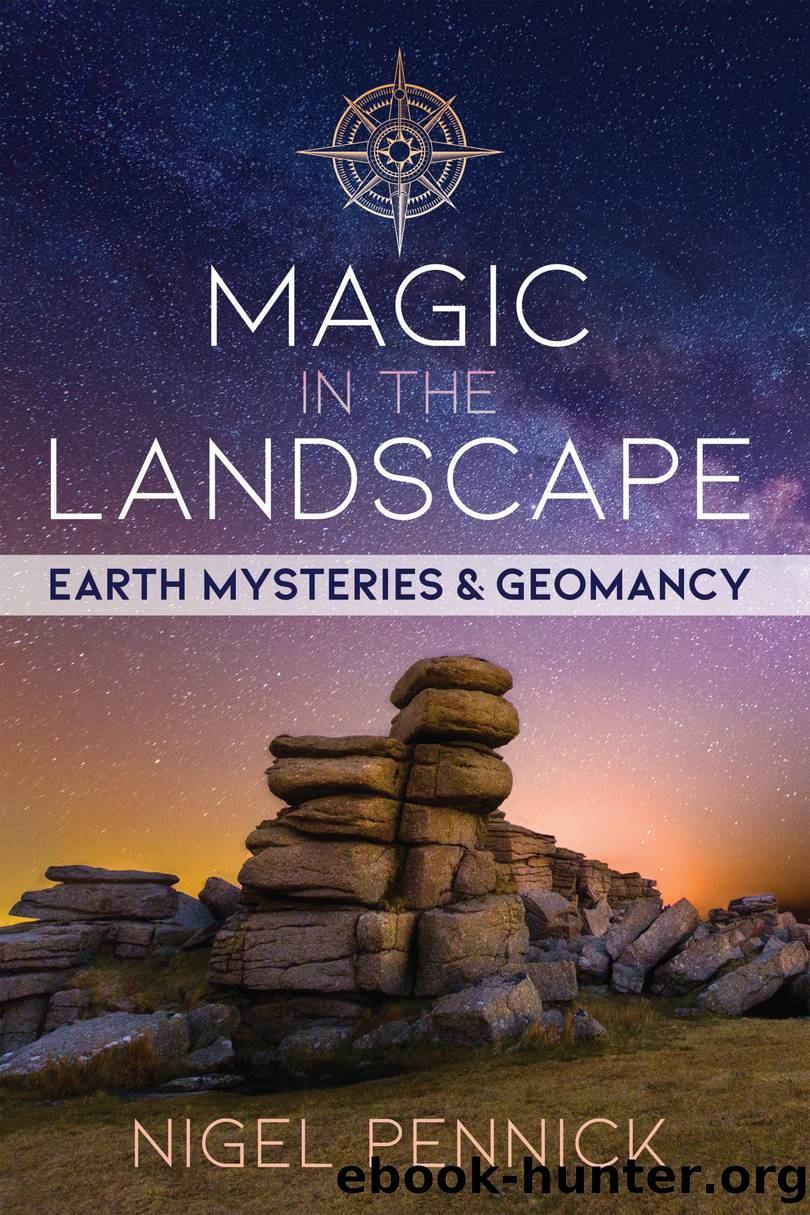Magic in the Landscape by Nigel Pennick

Author:Nigel Pennick
Language: eng
Format: epub
Tags: Spirituality/Occult
Publisher: Inner Traditions/Bear & Company
Published: 2020-03-02T00:00:00+00:00
10
THE MYSTIC TRIANGLE
No-Manâs Land
In the West Country magical enclosures are called gallitraps, which folklorist Theo Brown viewed as transdimensional gateways, artificial entrances to the underworld (1966, 125). The name gallitrap was given to a magic circle, pentacle, or triangle made by a conjuring parson to lay a ghost or entrap a criminal. An account of ghost laying by an eighteenth-century Cornish conjuring parson named Corker, at Bosava, near Lamorna, refers to a sacred triangle: âThe parson, assisted by Dr. Maddron and the miller, drew the magic pentagram and sacred triangle, within which they placed themselves for safety, and commenced the other ceremonies, only known to the learned, which are required for the effectual subjugation of restless spirits . . .â (Rees 1898, 255). A gallitrap also can be a particular kind of âa waste piece of land.â They are uncultivated, usually triangular, pieces of ground such as the pieces of ground at a trifinium, the center of the junction of three country roads. This is also called a âcocked hatâ (Brown 1966, 124), but more commonly âno-manâs land.â In the 1930s, C. B. Sibsey noted that in the neighborhood of Frieston in Lincolnshire, âtriangular corners of fields are filled with trees; and the groups are known as âDevilâs Holts.â The belief is still current that these were left for the Devil to play in, otherwise he would play in the fields and spoil the cropsâ (quoted by Rudkin 1934, 250).
Similar eldritch land triangles in other parts of Britain are called the Old Guidmanâs Ground, the Gudemanâs Croft, the Haliemanâs Ley, the Halymanâs Rig, the Black Faulie, Clootieâs Croft, and the Devilâs Plantation. It was customary for the farmer to promise never to till the earth there (McNeill 1957, I, 62). In his Letters on Demonology and Witchcraft, Sir Walter Scott noted, âThough it was not expressly avowed, no one doubted that âthe gudemanâs croftâ was set apart for some evil being; in fact, that it was the portion of the arch fiend himself . . . this was so general a custom that the Church published an ordinance against it as an impious and blasphemous usageâ (1885, 78â79). These uncultivated triangles are no-manâs land because they belong to no human but to the denizens of the spirit world.
During the Great War (World War I, from 1914 to 1918) No-Manâs Land was a place of death, the battle-torn landscape between the trenches of the opposing armies. It was literally a place of the dead, territory fought in and fought over, to be won or lost yard by yard at the cost of the combatantsâ blood. The literal destruction of the entire landscape of the front line by shellfire, trench digging, and tunneling made the pre-war French or Flemish place-names meaningless. Bridges and hills were known by numbers only, other features known by letters, like Y Ravine, and places renamed for functions, like Transport Farm. The British soldiers gave the most dangerous places on the front names like Hellblast Corner, Hellfire Corner,
Download
This site does not store any files on its server. We only index and link to content provided by other sites. Please contact the content providers to delete copyright contents if any and email us, we'll remove relevant links or contents immediately.
Llewellyn's 2024 Witches' Companion by Llewellyn Publishing(254)
The Path of the Hedge Witch by Joanna van der Hoeven(237)
The Twelve Even Stranger Days of Christmas by Syd Moore(234)
Sexual Practices of the Druids by Jon G. Hughes(226)
Magic in the Landscape by Nigel Pennick(209)
Wicca Book of Spells Witches' Planner 2021: A Wheel of the Year Grimoire with Moon Phases, Astrology, Magical Crafts, and Magic Spells for Wiccans and Witches (Wicca for Beginners Series) by unknow(193)
The Turning of the Year: Lore and Legends of the Irish Seasons by Eithne Massey(189)
The Celtic Wicca Spell Book: The Magick and Mythology of Celtic Witchcraft by Didi Clarke(189)
Pagan Portals--Animal Magic by Rachel Patterson(186)
The Rising by Katherine Genet(180)
How to Thrive in Changing Times by Sandra Ingerman(179)
Animal Spirit Guides by Steven D. Farmer Ph.D(176)
Green Witch: A Post-Apocalyptic Adventure (Dragon Wars Book 4) by Shéa R. MacLeod(176)
World Shaman: Encountering Ancient Himalayan Spirits in Our Time by Ellen Winner & Mohan Rai(170)
Wiccan Celebrations by Silver Elder(168)
The Deep Heart of Witchcraft by David Salisbury(165)
Llewellyn's 2013 Witches' Companion by Lupa(157)
The Journey to the Sacred Garden by Hank Wesselman Ph.D(153)
Paganism 101 by Trevor Greenfield(148)
